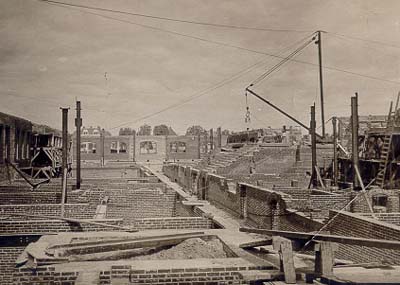Palmer Hall Construction
The architectural firm of Andrews, Jacques, and Rantoul from Boston, Massachusetts was commissioned to design the new science building at the turn of the century. The 287 foot by 95 foot building was constructed using peachblow sandstone (from the Frying Pan River area near Aspen) for the outer walls and red brick for the interior walls. Concrete floors were overlaid with a terazzo finish and the roof was red tile. Construction costs totaled $284,589 with the work completed in late 1903.
The original building (c. 1880) on the Colorado College campus was named Palmer Hall much earlier, but after the new science building was completed, that original building was renamed Cutler Hall leaving the new science building to honor General William J. Palmer, the founder of Colorado Springs and a strong supporter (financially and philosophically) of the college.

There were several laboratories in Palmer Hall and several large lecture halls. Of particular note was the large lecture hall on the basement floor seating 160 students and affectionately called the "Pit". The large chemistry lab on the first floor at the east end became the mathematics department offices much later. On the second floor was a large exhibition room (i.e. a museum) which among other exhibits housed the Henry S. Ward natural history collection purchase by William Stratton (local mining millionaire) in 1900. Administrative offices including President Slocum's office were on the first floor in the northwest corner.
Over the main portico of the building, a quotation from St. John's gospel is carved in stone:
"Ye shall know the truth and the truth shall make you free."


